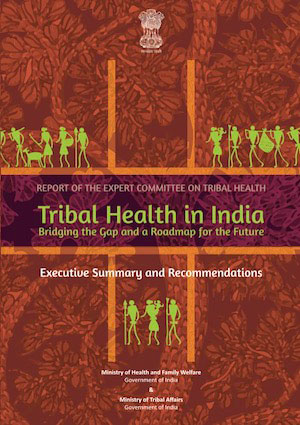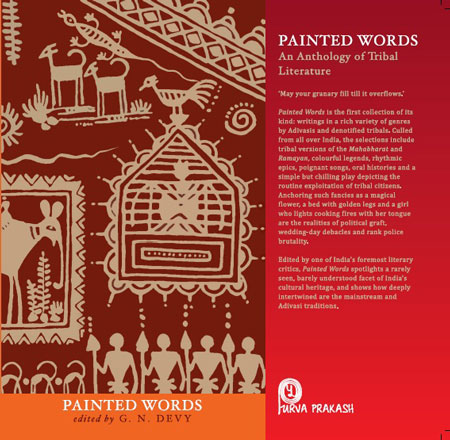One of the youngest, most resource-rich and forested states of India, Chhattisgarh has a population of about 25 million, more than three-quarters of which live in rural and remote parts of the state. Many of them are tribal groups working in small farming communities, known for their ancient traditions and intricate handicrafts. However, it is agriculture that offers basic sustenance to the people here, while poverty and isolation are ongoing challenges for many communities.
Many of Chhattisgarh’s most disadvantaged people live in distant and forested districts that remain poorly served by social services and have lower levels of human development. In Chhattisgarh, nearly 21,600 children die annually within the first week of their lives and one child in four under three years of age suffer from wasting due to acute undernutrition. While neonatal mortality stands at about 57 per cent, only 54 out of 1,000 deliveries are recorded as live births. More than half of adolescent girls in the state suffer from anaemia.
Challenges also exist in water safety, sanitation, school enrolment and quality of education, while violence in civil strife affected districts of Bijapur, Narayanpur, Dantewada, Bastar and Kanker make outreach and provision of social services difficult.
UNICEF in partnership with the State Government and civil society is nonetheless making significant progress with a range of programmes. These include initiatives to track and treat malnourished children, strengthen health and Integrated Child Development Services (ICDS) services, support health and immunization camps in difficult to reach areas, participative programming with adolescent youth, life skills education and advocating for psycho-social interventions in areas affected by civil strife. […]
There are a number of challenges facing the children of Chhattisgarh, of which child survival and development is possibly the most critical. […]
Other challenges and opportunities […]
- Education quality is also a concern, as is the low enrolment and school completion of children from disadvantaged groups. About 178,000 children in the 6 to14 age group are out-of-school, with half of these children coming from the five districts of the Bastar region.
- Not enough effort is being made towards multilingual education. Hence children who speak tribal languages feel constrained by the system.
- Communities are not properly informed or do not understand how to access available social programmes and services.
- UNICEF, along with the State Government, is working to improve coverage and usage of toilet facilities in schools and villages and to strengthen the Total Sanitation Campaign. Nearly 61 per cent of households, and approximately 95 per cent of schools and anganwadi (village health) centres have toilets but usage of these facilities continues to be a challenge in the state.
- Families and their children are in need of opportunities to express their fears and concerns when dealing with the ongoing civil strife, and dislocation of some communities along with other aspects, such as the provision of essential services, integration with families and communities, and livelihoods opportunities remain challenges.
UNICEF in Action
A UNICEF field office was established in Chhattisgarh as recently as 2006 and efforts are underway to identify, understand and address a range of concerns unique to the state and its people. […]
In schools, UNICEF has supported a range of programmes, including the introduction of activity-based learning systems in thousands of primary schools. With a pilot programme currently running in many classrooms, UNICEF is advocating multilingual education in schools attended predominantly by tribal students. […]
Child Protection and Education
- The introduction of activity-based learning systems has improved the quality of education in thousands of primary schools attended by almost two million children.
- Multilingual education in the primary tribal languages of Halbi and Gondi is being offered in pilot programmes in 25 schools in the Bastar District. UNICEF is assisting the State Government with its implementation of the Right to Education Act and will continue to hold awareness workshops at state and district levels.
- The Sports for Development initiative is being supported by UNICEF in the Dantewada and Bijapur districts, in which community sports coaches, teachers and local level resource persons are being trained. The programme aims to highlight the benefits of sports and physical education in children’s development and to pass this information on to children and their families.
- UNICEF’s flagship Child Reporters programme now operates throughout the state, allowing children to highlight any issues of deprivation and exclusion faced by them in their own bi-monthly newspaper. Children are taught their rights along with journalism skills.
UNICEF State Office for Chhattisgarh
503 Civil Lines
Raipur 492 001
Tel: 91 0771 404-5214, 404-5074
Source: UNICEF India – About us – Chhattisgarh
Address : http://www.unicef.org/india/overview_4330.htm
Date Visited: Mon May 27 2013 11:16:39 GMT+0200 (CEST)
Ramzauva Chhakchhuak, Deccan Herald, April 20, 2013
[…] Prasoon Sen, the Advocacy and Campaign Specialist for Unicef, Andhra Pradesh and Karnataka, explained that the move [to reduce funding for the Karnataka Child Rights Observatory] follows Unicef’s changing priorities and strategies in accordance with different regions and priorities. “Southern states like Karnataka, Tamil Nadu, Andhra Pradesh and Kerala represent ‘mature states.’ Then there are ‘priority states’ like Bihar, Uttar Pradesh and Rajasthan and ‘new states’ like Jharkhand and Chhattisgarh — which need to prioritise and plan on the basis of need,” he said. […]
Source: Unicef’s funding cuts for child advocacy send activists reeling
Address : http://www.deccanherald.com/content/327473/unicefs-funding-cuts-child-advocacy.html
Date Visited: Mon May 27 2013 11:40:29 GMT+0200 (CEST)
“It was assumed that tribal people have same health problems, similar needs and hence the uniform national pattern of rural health care would be applicable to them as well, albeit with some alteration in population: provider ratio. The different terrain and environment in which they live, different social systems, different culture and hence different health care needs were not addressed.”– Abhay Bang, Chairman, Expert Committee on Tribal health (2018 Report of the Expert Committee on Tribal Health)
Learn more >>
Download Tribal Health in India PDF (35 MB) >>
Searchable file (backup):
PDF (OCR 70 MB) >>

Related posts
See also
Adivasi Academy & Museum of Adivasi Voice at Tejgadh | Lecture “A View of Higher Education in India”
Appropriate education for Adivasi children – the Vidyodaya School model at Gudalur
Childhood | Children’s books | Childrens rights: UNICEF India | Safe search
People’s Linguistic Survey of India | Volumes (PLSI) | PeoplesLinguisticSurvey.org
Multi-lingual education | Residential school | Ekalavya
Multilingual education is a pillar of intergenerational learning – Unesco
Santali education | Teaching Santal children by Boro Baski
Unesco | Unicef | Unicef India | United Nations
United Nations International Days and Weeks
Video | “Nations don’t make us human – languages make us human”: Ganesh Devy
Women | Safe search | President Droupadi Murmu on women’s empowerment
Tips for using interactive maps
Toggle to normal view (from reader view) should the interactive map not be displayed by your tablet, smartphone or pc browser
For details and hyperlinks click on the rectangular button (left on the map’s header)
Scroll and click on one of the markers for information of special interest
Explore India’s tribal cultural heritage with the help of another interactive map >>
See also
Adverse inclusion | Casteism | Rural poverty
Demographic Status of Scheduled Tribe Population of India (Census figures 2011)
Fact checking | Figures, census and other statistics
Human Rights Commission (posts) | www.nhrc.nic.in (Government of India)
Search tips | Names of tribal communities, regions and states of India
“What is the Forest Rights Act about?” – Campaign for Survival and Dignity
“Who are Scheduled Tribes?” – Government of India (National Commission for Scheduled Tribes, NCST)

Tribal Literature by G.N. Devy >>
Free eBooks & Magazine: Adivasi literature and languages >>
“India, a union of states, is a Sovereign, Secular, Democratic Republic with a Parliamentary system of Government. The President is the constitutional head of Executive of the Union. In the states, the Governor, as the representative of the President, is the head of Executive. The system of government in states closely resembles that of the Union. There are 28 states and 8 Union territories in the country. Union Territories are administered by the President through an Administrator appointed by him/her. From the largest to the smallest, each State/UT of India has a unique demography, history and culture, dress, festivals, language etc. This section introduces you to the various States/UTs in the Country and urges you to explore their magnificent uniqueness…” – KnowIndia (Government), States and Union Territories (Visited: 2 September 2023)
Learn more about India’s 28 States and 8 Union Territories – From Andhra Pradesh to West Bengal | Nutrition >>